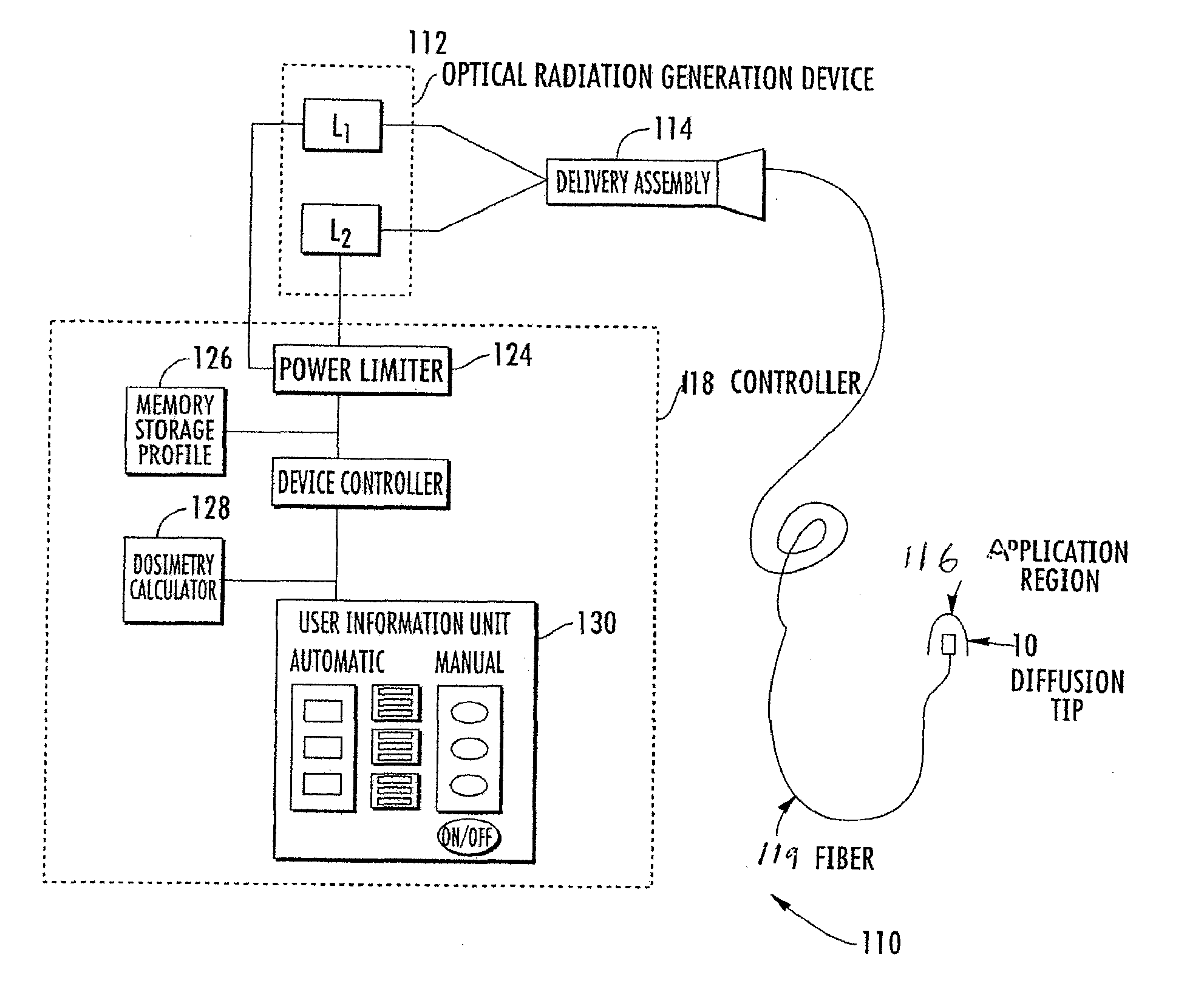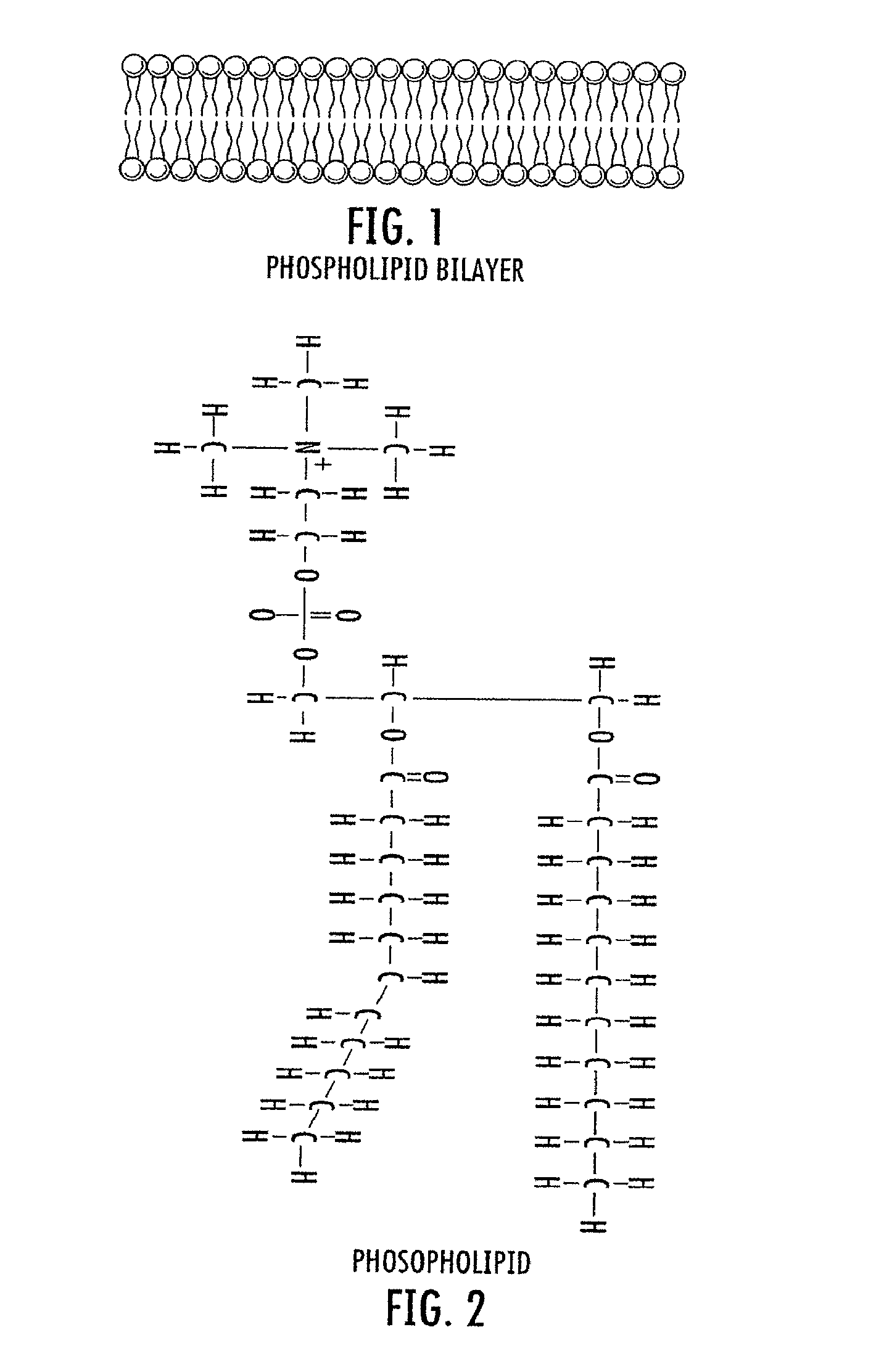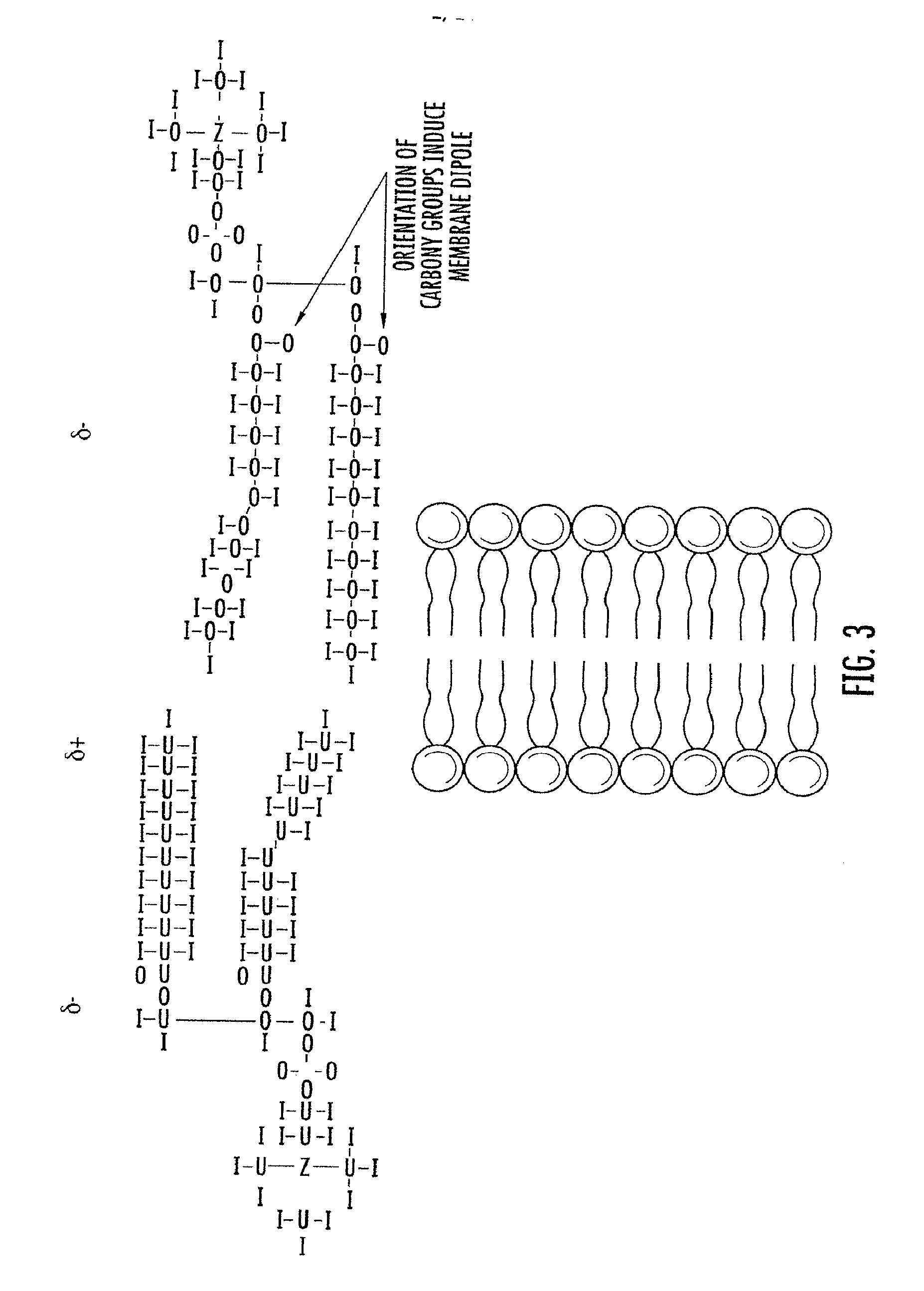Therapeutic light delivery apparatus, method, and system
a technology of light delivery apparatus and light source, which is applied in the field of therapeutic light delivery apparatus, method and system, can solve the problems of affecting the performance of conventional phototherapy devices incorporating a metallic housing, affecting the safety of patients,
- Summary
- Abstract
- Description
- Claims
- Application Information
AI Technical Summary
Benefits of technology
Problems solved by technology
Method used
Image
Examples
examples
[0300]The following examples are included to demonstrate exemplary embodiments of the present invention and are not intended to limit the scope of the invention. Those of skill in the art, will appreciate that many changes can be made in the specific embodiments and still obtain a like or similar result without departing from the spirit and scope of the present invention.
TABLE 2MIC values for Susceptible, Intermediate and Resistant S. aureusMinimum Inhibitory Concentration (MIC) InterpretiveStandards (μg / ml) for Staphylococcus sp.Antimicrobial AgentSusceptibleIntermediateResistantPenicillin≦0.12—≧0.25Methicillin≦8—≧16AminoglycosidesGentamicin≦48≧16Kanamycin≦1632 ≧64MacrolidesErythromycin≦0.51-4≧8TetracyclineTetracycline≦48≧16FluoroquinoloneCiprofloxacin≦12≧4Folate Pathway InhibitorsTrimethoprim≦8—≧16AnsamycinsRifampin≦12≧4
example ii
Bacterial Methods: NIMELS Treatment Parameters for In Vitro MRSA Experiments
[0301]The following illustrates the general antibacterial methods according to the invention, using a MRSA model for the in vitro Experiments V and VIII-XII.
A. Experiment Materials and Methods for MRSA:
[0302]
TABLE 3Method: for CFU countsTimeFTE(hrs)Task(hrs)T −18Inoculate overnight culture150 ml directly from glycerol stockT −4Set up starter cultures1Three dilutions 1:50, 1:125, 1:250 LB MediaMonitor OD600 of starter cultures4T 0Preparation of plating culture1At 10:00 am, the culture which is at OD600 = 1.0 isdiluted 1:300 in PBS (50 mls final volume) and stored atRT for 1 hour.(Room temp should be ~25° C.)T +1Seeding of 24-well plates12 ml aliquots are dispensed into pre-designated wells in24-well plates.T +2Dilution of treated samples4to +8After laser treatment, 100 μl from each well is dilutedserially to a final dilution of 1:1000 in PBS.Plating of treated samples2100 μl of final dilution is plated in qui...
example iii
Mammalian Cell Methods: NIMELS Treatment Parameters for In Vitro HEK293 Experiments
[0305]The following parameters illustrate the general methods according to the invention as applied to HEK293 cells for the in vitro experiments.
A. Experiment Materials and Methods for HEK293 Cells.
[0306]HEK293 cells were seeded into appropriate wells of a 24-well plate at a density of 1×105 cells / ml (0.7 ml total volume) in Freestyle medium (Invitrogen). Cells were incubated in a humidified incubator at 37° C. in 8% CO2 for approximately 48 hours prior to the experiment. Cells were approximately 90% confluent at the time of the experiment equating to roughly 3×105 total cells. Immediately prior to treatment, cells were washed in pre-warmed phosphate buffer saline (PBS) and overlaid with 2 ml of PBS during treatment.
[0307]After laser treatment, cells were mechanically dislodged from the wells and transferred to 1.5 ml centrifuge tubes. Mitochondrial membrane potential and total glutathione was determi...
PUM
 Login to View More
Login to View More Abstract
Description
Claims
Application Information
 Login to View More
Login to View More - R&D
- Intellectual Property
- Life Sciences
- Materials
- Tech Scout
- Unparalleled Data Quality
- Higher Quality Content
- 60% Fewer Hallucinations
Browse by: Latest US Patents, China's latest patents, Technical Efficacy Thesaurus, Application Domain, Technology Topic, Popular Technical Reports.
© 2025 PatSnap. All rights reserved.Legal|Privacy policy|Modern Slavery Act Transparency Statement|Sitemap|About US| Contact US: help@patsnap.com



